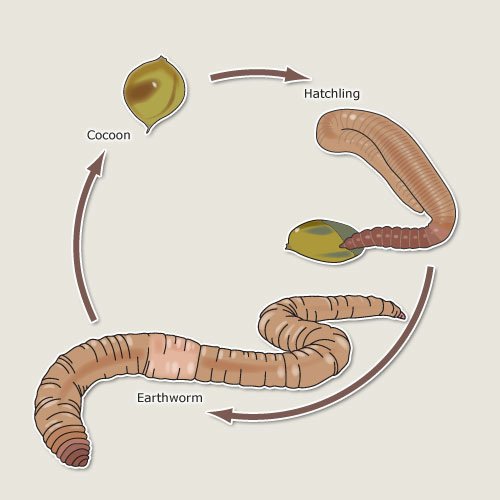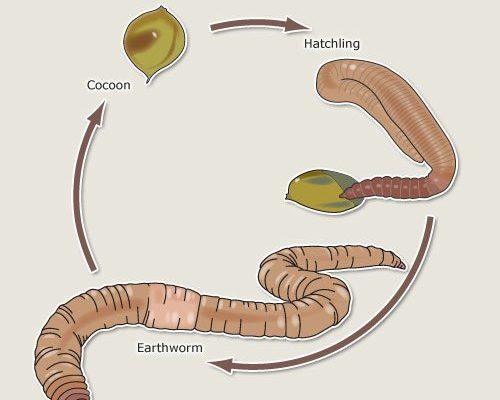
This article will take you on a detailed tour of each stage of the wolf worm lifecycle. We’ll explore what happens at each point, how these little critters survive, and why they are essential for our environment. So, grab a cup of coffee, and let’s dive into the world of wolf worms together!
Understanding the Eggs: The Starting Point
The lifecycle of a wolf worm begins with its eggs, and honestly, in the grand scheme of nature, this is a crucial starting point. Female wolf worms lay their eggs in special sacs called *egg masses*. These masses can contain hundreds of tiny eggs, safely tucked away in a soft, protective coating. Think of these egg sacs like little treasure chests, keeping precious contents safe from predators and harsh conditions.
Once the eggs are laid, they require the right environment to thrive. Typically, the eggs are placed in moist areas with plenty of shelter, like under leaves or within the crevices of rocks. This is essential because moisture helps keep the eggs from drying out. Over time, usually within a few weeks, the eggs will start to develop and prepare for the next stage of life.
You might be wondering, how do the eggs know when it’s time to hatch? Well, it’s all about the conditions around them. Changes in temperature and humidity serve as signals, prompting the little embryos to begin their transformation into tiny larvae. This brings us to the next fascinating stage of the wolf worm lifecycle.
The Larval Stage: Emerging into the World
Once the eggs hatch, we enter the larval stage, where tiny larvae emerge from their protective egg masses. These larvae, often called instars, are tiny and somewhat similar in appearance to miniature versions of adult wolf worms. At this point, they’re vulnerable and rely on their surroundings to stay safe.
During this stage, the larval wolf worms will begin to feed on small insects and organic matter around them. They play an important role in the ecosystem by helping to control pest populations. You could say they’re like the cleanup crew of the garden, ensuring balance in the food web.
As the larvae grow, they go through several molts. This means they shed their exoskeleton to accommodate their growing bodies. With each molt, they become more developed and closer to becoming adult wolf worms. It’s a bit like going through a series of growth spurts, gaining strength and size with each stage. This process can take anywhere from a few weeks to several months, depending on environmental conditions.
The Juvenile Stage: Developing Skills
After the larval stage, wolf worms transition into what’s called the juvenile stage. This stage is vital for their development, as they begin to take on more adult-like characteristics. They are now larger and eat a wider variety of prey, which helps them grow stronger and more independent.
Juvenile wolf worms are often more active, exploring their surroundings and hunting for food. Here’s the thing: during this time, they are still not fully mature, and many predators still pose a threat to them. This means they must be clever and hide well. They might use camouflage or seek shelter to avoid being caught. It’s a bit like transitioning from the safety of home to facing the world for the first time—exciting but a little dangerous too!
As they continue to grow, they will undergo more molts, solidifying their adult features. Each molt brings them closer to reaching adulthood, a stage filled with new challenges and opportunities.
The Adult Stage: The Final Transformation
Finally, we arrive at the adult stage of the wolf worm lifecycle. This is when they reach their full size and develop all the features needed for survival. Adult wolf worms have distinct physical traits, including their signature wolf-like appearance and hunting capabilities. They’re now ready to take on the world!
When they reach maturity, adult wolf worms look for a mate to continue the cycle of life. They often engage in fascinating courtship rituals to attract partners. After mating, the female will lay eggs, and the cycle begins anew.
Adults are more resilient than their younger counterparts, capable of hunting and navigating through various environments. They play an essential role in controlling insect populations and contribute to soil health—making them vital players in their ecosystems. By hunting pests, they help promote a balanced environment, which is crucial for many species, including humans.
The Importance of Wolf Worms in the Ecosystem
You might be wondering why understanding the wolf worm lifecycle matters in the grand scheme of nature. Well, here’s the thing: wolf worms are not just fascinating; they’re essential to maintaining the health of their habitats. As predators, they help regulate the populations of insects, ensuring no single species dominates an area.
This balance is crucial for various plants and animals within the ecosystem. For example, without enough predators, certain pest populations could explode, leading to overgrazing and plant extinction. By keeping these populations in check, wolf worms help foster biodiversity.
Additionally, as they break down organic matter while feeding, they contribute to nutrient cycling in the soil, promoting healthier plant growth. So, while you might not think about them often, wolf worms play a significant role in keeping our natural world functioning smoothly.
Challenges Faced by Wolf Worms
Like many creatures, wolf worms face challenges in their lifecycles. Habitat loss, climate change, and pollution can significantly impact their populations. Changes in temperature and moisture levels can affect egg-laying and survival rates, pushing them to find new areas to thrive.
As their habitats shrink due to urban development or agriculture, it becomes harder for them to find safe places to lay eggs and hunt. This is where human actions can significantly impact their survival. Conservation efforts that focus on preserving natural habitats can help ensure that wolf worms continue to contribute to their ecosystems.
Moreover, public awareness about these creatures and their importance can foster appreciation and encourage supportive actions. After all, every tiny creature plays a role in the greater tapestry of life.
The lifecycle of the wolf worm is a testament to nature’s complexity and beauty. From the humble beginnings of an egg to the confident emergence of an adult, each stage is crucial and filled with stories of survival and adaptation. Understanding this journey helps us appreciate the interconnectedness of life and the significance of every species, no matter how small.
As you reflect on the wonders of the wolf worm lifecycle, remember that every living thing plays a part in our world. By learning about these fascinating creatures, we can contribute to their conservation and ensure they continue to thrive alongside us. So next time you spot a wolf worm, take a moment to acknowledge its incredible journey and the vital role it plays in the ecosystem.

